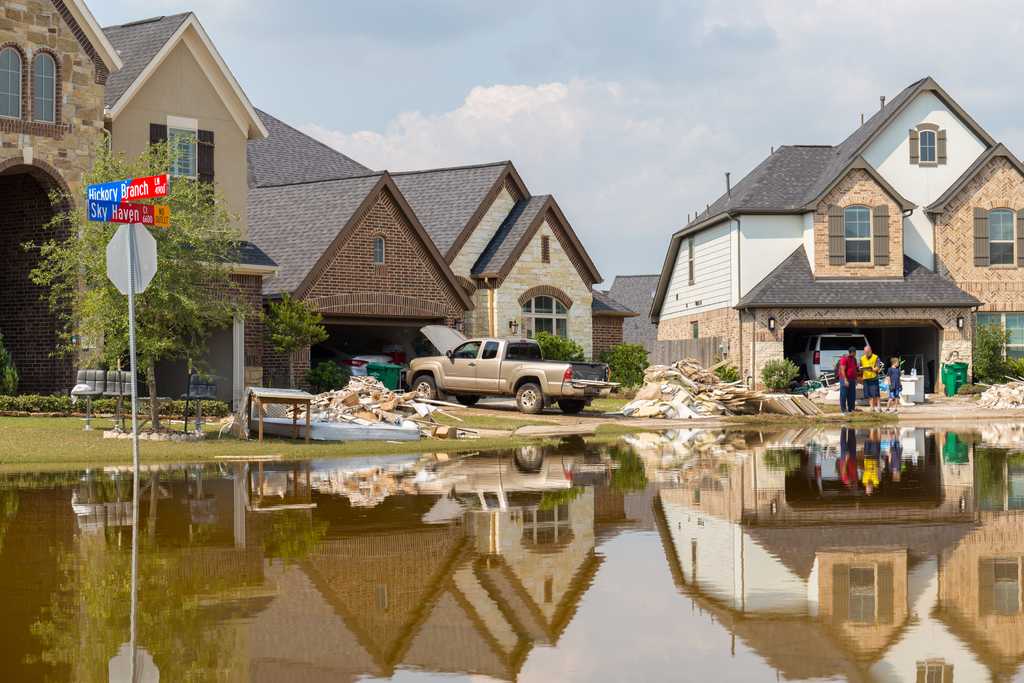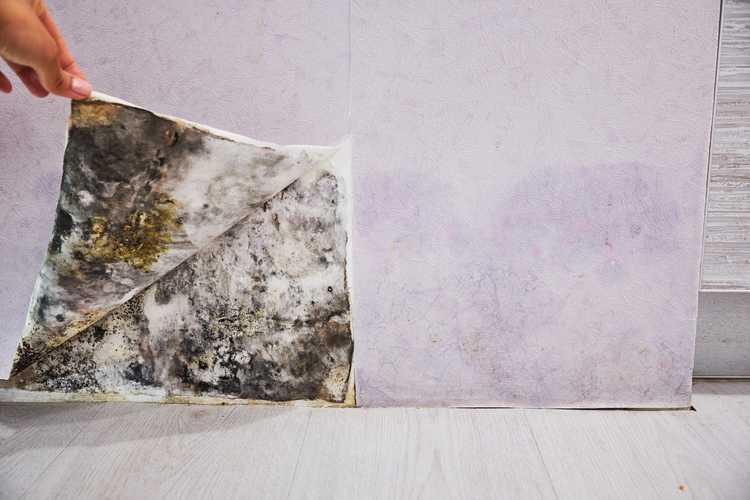Standard homeowners and renters insurance policies never cover flood damage, even if it’s sudden and accidental. If you live in an area that is prone to flooding, it’s a good idea to purchase a separate flood insurance policy.
Flood insurance is available through the federally-funded National Flood Insurance Program (NFIP). Most major insurance providers sell flood insurance policies through the NFIP. The average cost of flood insurance is $700 per year, but there are a handful of factors that contribute to your premium.
What does flood insurance cover?
Flood insurance pays to repair the physical structure of your home and replace your personal belongings that get damaged by flood waters. A standard residential NFIP policy includes up to $250,000 for dwelling coverage and up to $100,000 for personal property coverage.
Although flood insurance provides comprehensive protection, it doesn’t cover everything. If you need to file a claim, the cause of the flood determines whether or not the claim will be covered. The NFIP defines a flood as, “An excess of water on land that is normally dry, affecting two or more acres of land or two or more properties.”
Examples of covered flood claims include hurricanes and heavy rain, storm surges, flash flooding, and even home flooding caused by sewer backups and burst pipes. Any residual losses that are caused as a direct result of flooding, like water damage, will also be covered under a flood insurance policy from the NFIP.
Some examples of losses that flood insurance does not cover include temporary housing if your home is severely damaged, personal property stored in a basement, yard and garden flooding, damage to pools, fences, patios, and sheds, valuable items kept inside your home, and vehicles in your garage or driveway.
Average flood insurance cost by state
There are a few factors that impact the cost of flood insurance, and where you live is one of the biggest. Naturally, flood insurance is most expensive in states that are located along the coastline, in high-risk hurricane areas, and in certain flood zones. The table below includes the average cost of flood insurance in all 50 states.
| State | Avg cost |
|---|---|
Vermont | $1,512 |
Connecticut | $1,471 |
Rhode Island | $1,418 |
Pennsylvania | $1,305 |
Massachusetts | $1,294 |
West Virginia | $1,273 |
New York | $1,231 |
Missouri | $1,152 |
Ohio | $1,151 |
Maine | $1,119 |
Iowa | $1,115 |
Indiana | $1,100 |
New Hampshire | $1,098 |
Illinois | $1,096 |
Kentucky | $1,095 |
Michigan | $1,054 |
Nebraska | $1,040 |
Wisconsin | $1,012 |
South Dakota | $994 |
Wyoming | $994 |
Kansas | $972 |
New Jersey | $950 |
Tennessee | $940 |
Washington | $937 |
Colorado | $930 |
Arkansas | $925 |
Oklahoma | $919 |
Oregon | $912 |
New Mexico | $912 |
Alaska | $909 |
Minnesota | $872 |
California | $852 |
Montana | $824 |
Mississippi | $784 |
Virginia | $772 |
Idaho | $764 |
Nevada | $751 |
Delaware | $748 |
North Carolina | $739 |
Utah | $735 |
Arizona | $711 |
Louisiana | $707 |
South Carolina | $699 |
Alabama | $698 |
Georgia | $689 |
Hawaii | $678 |
North Dakota | $663 |
Texas | $618 |
Maryland | $616 |
Florida | $592 |
States with the highest average flood insurance costs
If you live near the coastline or in a high-risk flood zone, expect your flood insurance costs to be higher than average. In the table below, we’ve highlighted the states with the most expensive average flood insurance premiums.
| State | Avg cost |
|---|---|
Vermont | $1,512 |
Connecticut | $1,471 |
Rhode Island | $1,418 |
Pennsylvania | $1,305 |
Massachusetts | $1,294 |
States with the lowest average flood insurance costs
Although floods can occur anywhere and at any time, certain states have a much lower risk of flooding than others. If you live in a low-risk flood area, you will probably pay a much lower premium for flood coverage. The table below includes the states with the lowest average flood insurance costs.
| State | Avg Cost |
|---|---|
Hawaii | $678 |
North Dakota | $663 |
Texas | $618 |
Maryland | $616 |
Florida | $592 |
Cost of flood insurance in SFHAs
FEMA uses the designation "Special Flood Hazard Area” (SFHA) to classify regions that have the highest risk of flooding. Homeowners that live in SFHAs are often required to carry flood insurance in order to get a mortgage. Due to the increased risk of flood damage, flood insurance policies in SFHAs are significantly more expensive than in other areas. Here are the average costs of flood insurance in SFHAs.
Cost of Flood Insurance in Zone A, AE, A1-A30, AO and D
| Building type | Cost for minimum coverage | Cost for maximum coverage |
|---|---|---|
Non-elevated with subgrade crawlspace | $1,025 | $4,144 |
No basement or enclosure* | $1,025 | $4,362 |
Elevated on crawlspace | $1,025 | $4,362 |
Mobile home | $1,025 | $4,362 |
With basement | $1,073 | $5,104 |
With enclosure | $1,073 | $5,892 |
*As defined by FEMA, an enclosure is a "walled in [area] below the lowest floor of an elevated building." |
Cost of Flood Insurance in Zone V, VE and V1-V30
| Building type | Cost for minimum coverage | Cost for maximum coverage |
|---|---|---|
Non-elevated with subgrade crawlspace | $1,329 | $9,002 |
No basement/enclosure* | $1,329 | $9,504 |
Elevated on crawlspace | $1,329 | $9,504 |
With basement | $1,389 | $11,399 |
With enclosure | $1,389 | $13,197 |
*As defined by FEMA, an enclosure is a "walled in [area] below the lowest floor of an elevated building." |
Factors that determine flood insurance cost
Average flood insurance premiums are just that—averages. NFIP flood insurance rates are unique to every homeowner, and there are a few different factors that will impact your flood insurance premium. Some of the most common factors include:
- Where you live: Homes that are located in high-risk flood zones or SFHAs pay the highest flood insurance premiums. If your home is located in a lower-risk flood area, you will be quoted a lower rate.
- Type of coverage: The type of coverage you get will impact your premium. If you choose a policy with just dwelling coverage, you will pay less than if you purchase a policy with dwelling and contents coverage together.
- Amount of coverage: If you need a high amount of dwelling or contents coverage, you will pay a higher rate. Homeowners who purchase less coverage will pay a lower rate. Keep in mind that you should have enough coverage to rebuild your home back to its original condition and replace your personal belongings if they were to get damaged in a flood.
- Your deductible: Flood insurance has a deductible, which is an out-of-pocket cost you must pay towards a covered loss before the insurance company will reimburse you. The higher your deductible is, the lower your annual premium will be, and vice versa.
- Your home’s build: Some homes are more resilient than others. If your house is newly built, and is constructed with durable materials, you will likely pay less for flood insurance than someone who’s home is 40 years old and has never been renovated.
- Your home’s elevation: Houses that are located in higher elevations have a lower flood damage risk, and are less expensive to insure. Additionally, homes that have elevated utilities, pipes, and wiring systems are usually cheaper to insure.
How to lower your flood insurance premium
Flood insurance can be expensive, especially if you live in a high-risk flood zone. Fortunately, there are ways that you can lower your flood insurance premium. Here are some ways to get a cheaper rate:
Reduce your home’s flood risk
Flood insurance rates are based mostly on where your home is located and how much flood risk exists in your area. One of the most effective ways to lower your flood insurance premium is to reduce your home’s risk of flood damage in the first place. You can do this by elevating your utilities, installing flood openings, filling in your basement, and ultimately, moving to a new home in a less flood-prone region.
Raise your deductible
Raising your deductible can help you get a cheaper flood insurance premium. According to the NFIP, raising your deductible to the $10,000 maximum can reduce your annual premium by as much as 40%. However, remember that your deductible is an out-of-pocket cost. So if you increase the deductible to get a lower rate, you will have to pay more towards a covered flood loss if you need to file a claim in the future.
Get an elevation certificate
If your home is located above a certain elevation, you can get a lower flood insurance rate, but you’ll need to provide an elevation certificate. This document verifies that your home is built at an elevation above the height that a major flood could reach in your area. You might already have an elevation certificate included in the property deed for your home. If not, you can hire a land surveyor, engineer, or architect to determine the elevation and provide documentation.
Buying flood insurance for your home
Flood insurance is usually optional, unless you live in a high-risk flood zone as defined by the NFIP and FEMA. But even if you don’t live in an area that is prone to flooding, it’s still a good idea to consider flood insurance.
Standard homeowners and renters insurance policies never cover flood damage, so without flood insurance, you are financially responsible for repairing the physical structure of your home and replacing your personal belongings if a major flood causes extensive damage.



